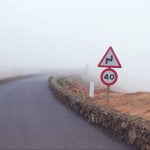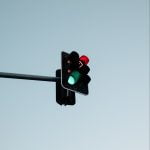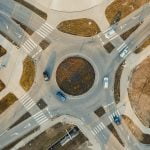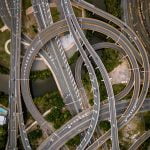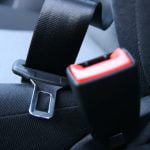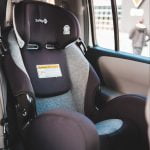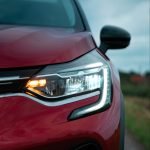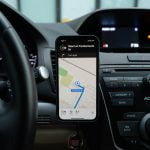Driving Croatia’s scenic roads can be an unforgettable experience, but it’s important to familiarize yourself with the local rules and regulations if you’re a foreigner renting a car. Here is a detailed guide to the most important aspects of driving in Croatia:
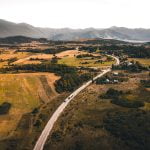
A short guide on driving in Croatia
Traffic side

Remember to drive on the right side of the road in Croatia. This is especially important if you come from a country where you drive on the left side of the road.
Speed limits

Speed limits in Croatia vary depending on the type of road and vehicle you are driving. In urban areas, the limit is 50 km/h (31 mph), while outside urban areas the limit is 90 km/h (56 mph). On expressways, it’s 110 km/h (68 mph), and on highways, you can go up to 130 km/h (81 mph). Always be aware of posted speed limits as they may change in certain areas.
Traffic lights

Traffic lights in Croatia conform to international standards. Red means stop, green means go and yellow means prepare to stop. When the light changes to amber, be careful as some drivers may accelerate to beat the red light.
Roundabouts

Roundabouts are very common in Croatia. When approaching a roundabout, yield to vehicles already inside the circle, indicate your exit and always give way to vehicles on your right.
Right of way

In the absence of specific road signs, the general rule is to give way to vehicles approaching from the right. However, it’s a good idea to yield to other vehicles when you’re uncertain to avoid accidents.
Seat belt use

It is mandatory for all passengers in the vehicle, both front and rear, to wear seat belts. Failure to comply may result in a fine.
Child safety

If you are traveling with children who are less than 150 cm (4.9 feet) tall or younger than 12 years old, ensure that they use appropriate child safety seats or boosters based on their age, weight and height. Make sure your rental car has the required child safety seats.
Use of headlights

In Croatia, you must keep your headlights on at all times, even during the day. This is a safety measure to improve visibility, especially in tunnels.
Phone use

It is illegal to use a cell phone while driving unless you are using a hands-free system. Penalties for using a phone while driving can be significant, so it’s best to avoid distractions.
Alcohol limit

Croatia enforces strict alcohol limits for drivers. The legal blood alcohol concentration (BAC) is 0.05%, but for new drivers (with less than 2 years experience) there is a zero tolerance policy. Never drink and drive.
Road conditions

Croatia generally has well-maintained roads. However, be aware that some rural and mountainous areas may have narrower and more winding roads. Exercise caution, especially in adverse weather conditions.
Road tolls

Croatia operates a toll system on its highways. Tolls can be paid by cash or credit card. Make sure you have local currency or a credit card that is accepted in Croatia for toll payments.
Fuel availability

Gas stations are readily available throughout Croatia, including along major highways. It’s a good idea to fill up before long trips, especially in rural areas where gas stations are less common.
Necessary documents

When driving in Croatia, you should carry the following documents with you: a valid driver’s license from your home country, vehicle registration and rental documentation, passport or identity card, proof of insurance (provided by your rental company), and an international driving permit (recommended, but not required for some nationalities).
Emergency numbers

In case of emergency, dial 112 for general assistance. For road-related emergencies or accidents, dial 1987. Be prepared to communicate in English or use translation tools if necessary.
By following these guidelines and staying informed about local traffic regulations, you can ensure a safe and enjoyable driving experience while exploring the magnificent scenery and cultural treasures of Croatia. Always be considerate of others on the road and respect local customs to ensure a pleasant trip.
Frequently asked questions about driving in Croatia
Is it safe to drive in Croatia?
Croatia is generally a safe country to drive in. Roads are well maintained and traffic laws are enforced. However, be careful on narrow and winding roads, especially in rural areas, and be aware of aggressive drivers in urban areas.
Can I use my foreign driving license in Croatia?
Yes, you can use your foreign driving license in Croatia. It’s advisable to carry an International Driving Permit (IDP) as a translation aid, but it’s not mandatory for all nationalities.
What should I do if I have an accident or break down in Croatia?
In the event of an accident, call the police on telephone number 1987 or 112 for general emergencies. Follow the standard procedure for exchanging information with the other party involved. In case of a breakdown, contact the emergency number of your rental car company, which should be provided to you.
Are there any special parking regulations I should be aware of?
Parking regulations vary from city to city and region to region in Croatia. Look for parking signs and pay attention to parking zones. In some places, you may need to buy a parking ticket or use a parking app. Avoid parking in no-parking zones or unauthorized areas to avoid fines and towing.
Can I use my credit card to pay for fuel and tolls in Croatia?
Yes, most gas stations in Croatia accept credit cards, and they are widely used to pay tolls on highways. However, it’s a good idea to carry some local currency for smaller purchases or in case you encounter places that don’t accept cards.
What is the condition of the roads in Croatia?
While Croatia’s major highways and roads are generally in good condition, rural and mountain roads can be narrow and winding. Be careful when driving in these areas, especially in bad weather conditions.
Are there any wildlife hazards on Croatian roads?
Croatia has some rural areas where wildlife such as deer and wild boar can be a hazard, especially at dawn and dusk. Pay attention to road signs warning of potential wildlife crossings and reduce your speed accordingly.
How do I pay for parking in Croatian cities?
Many cities in Croatia have paid parking zones. You can usually buy tickets from machines, kiosks or use parking apps. Be sure to check the specific regulations and payment methods in the city you are visiting.


